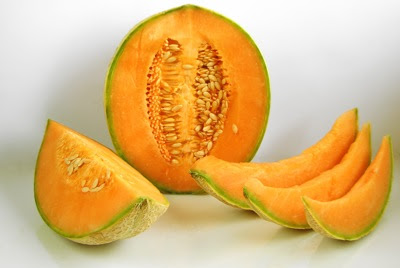 |
| How to germinate and grow melon plants from seed |
Melons have been grown for their deliciously sweet flesh for over 4000 years. In fact, melons have been under human cultivation for so long that they no longer bear any resemblance to species plants growing in the wild.
Originating in the hot valleys of North Africa, south-west Asia and India, the popularity of this fruit has seen it spread across the globe. History tells us that the early American settlers grew cultivars of honeydew and casaba melons back in the 1600's, and even now there are still a number of old varieties available today such as the 400 year old ‘Petit Gris de Rene’.
Of course, with modern breeding programs there are many more varieties available that will suit a wide range of tastes and while you can generally buy ‘out of season’ produce whenever you want, growing your own melons from seed will not only give you the best choice, it can also get you the very best flavor.
Direct sowing into the ground is the best way to grow melons from seed but for those of us who live in cooler, northern European climates, you will need to start your melon seed off indoors. This gives the resulting seedlings a fighting chance to produce and ripen their fruit in a much shorter growing period.
Sowing Seed Indoors
Sow the seeds indoors around the middle of March into either 2-3 inch pots or large, modular seed trays. Use good quality loam based compost such as John Innes ‘seed and potting’, and avoid the temptation of using standard seed trays because you will want to disturb the root system as little as possible. You may wish to add a little extra horticultural grit or perlite to you compost mix as this will help with the drainage. Melon seedlings will require plenty of water to ‘fuel’ their vigorous growth, but you don't want to attract fungal infections through over watering. The extra drainage will help to reduce this.
Sow the seeds indoors around the middle of March into either 2-3 inch pots or large, modular seed trays. Use good quality loam based compost such as John Innes ‘seed and potting’, and avoid the temptation of using standard seed trays because you will want to disturb the root system as little as possible. You may wish to add a little extra horticultural grit or perlite to you compost mix as this will help with the drainage. Melon seedlings will require plenty of water to ‘fuel’ their vigorous growth, but you don't want to attract fungal infections through over watering. The extra drainage will help to reduce this.
Fill the pots/modules to between half and three quarters full, then using a dibber - or something similar - make a hole in the compost about 1 inch deep – one hole in each container. Now place 2 - 3 melon seeds in each hole, cover with compost and gently water in. To help with germination they will need to be moved to a warm sunny windowsill, preferably above a radiator. Allow the soil to become almost dry before further watering.
.
.
After a couple of weeks the seed will begin to show signs of germination. As mentioned before, young melon plants will require plenty of water and nutrition to grow, so feed them regularly with a 50% strength liquid fertilizer. Just make sure that they are never left waterlogged otherwise root damage and fungal infections can occur. At this time you can remove the weakest seedling so that only the strongest remains.
Once the threat of late frosts are over the melon seedlings can be planted outside into their final position but they will need to be hardened off for at least a week or two beforehand. They will do best in a sunny, protected position with a slightly acid soil with a pH of between 6.0 and 6.5.
Remember that because of their origins Melons are cold-sensitive so keep an eye on both air and soil temperatures before planting out. They will prefer growing temperatures of between 70° and 80° F, but if cold weather does threaten the young melon plants would do well to have some kind of protection such as a mini polytunnel or cloche. If practical, they would benefit from being planted into a temporary cold-frame which could be removed during the heat of the summer.
For related articles click onto the following links:
GARDENERS WORLD: GROW MELON PLANTS FROM SEED
HOW TO COLLECT AND PREPARE MELON AND CUCUMBER SEEDS FOR PROPAGATION
HOW TO GROW MELONS IN A GREENHOUSE
HOW TO GROW WATERMELONS FROM SEED
HOW TO SOW AND GROW WATERMELON FROM SEED INDOORS
What is a Fig?
WHEN ARE MELONS READY FOR HARVEST?
For related articles click onto the following links:
GARDENERS WORLD: GROW MELON PLANTS FROM SEED
HOW TO COLLECT AND PREPARE MELON AND CUCUMBER SEEDS FOR PROPAGATION
HOW TO GROW MELONS IN A GREENHOUSE
HOW TO GROW WATERMELONS FROM SEED
HOW TO SOW AND GROW WATERMELON FROM SEED INDOORS
What is a Fig?
WHEN ARE MELONS READY FOR HARVEST?









No comments:
Post a Comment